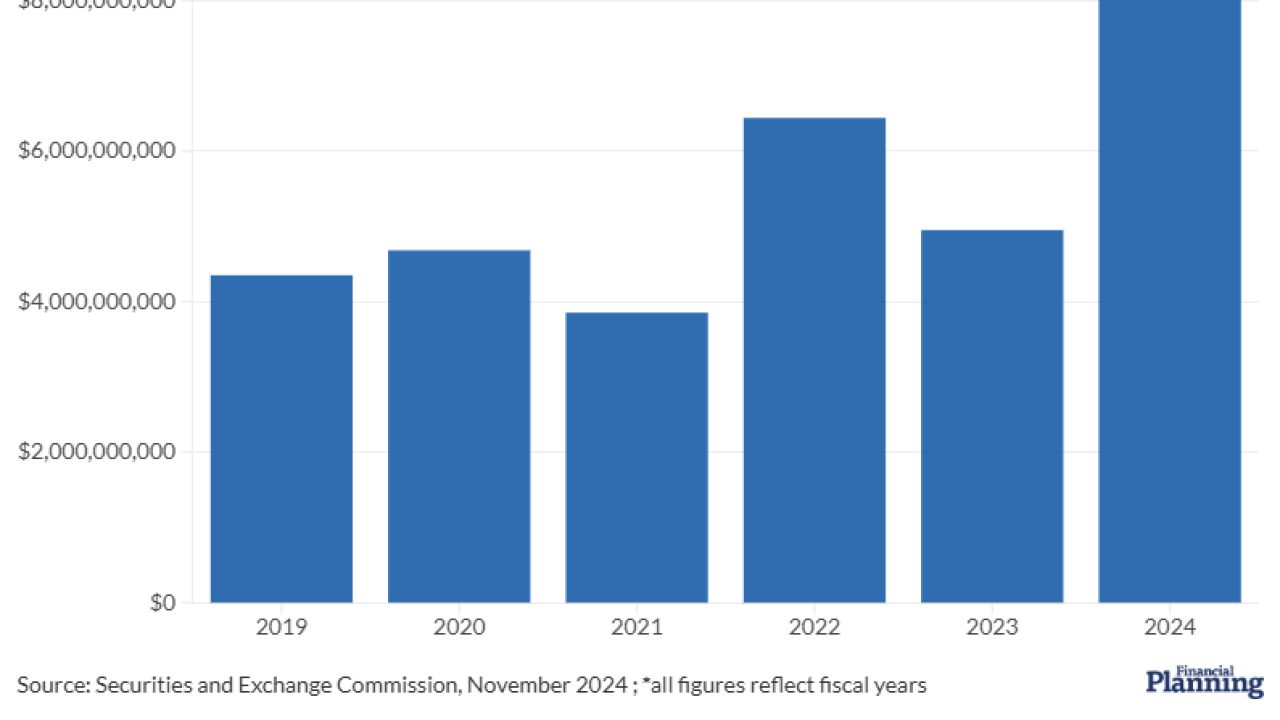Required minimum distributions can be a touchy subject for retirees and their financial advisors, requiring them to liquidate assets that they may prefer to keep in the market. Frustration around RMDs is often compounded by the tax consequences they present, but advisors say one little-known strategy could help ease the burden — especially as investors wait for stocks to fully recover from a tariff-driven downturn.
The strategy hinges on the unique flexibility of tax withholdings on
The idea of withholding income taxes from a retirement account distribution isn't new. Retirees often withhold a set percentage, say 20%, of a distribution for taxes. For example, a retiree can say, "Distribute $20,000 from my IRA, withhold 20% for taxes and send the net $16,000 to me." But what many advisors miss is the ability to delay tax payments until the end of the year, according to Keith Fenstad, vice president and director of wealth planning at Tanglewood Total Wealth Management in Houston, Texas.
READ MORE:
Through this strategy, retirees can take smaller monthly or quarterly distributions without any tax withholding and then make a much larger tax withholding on a distribution toward the end of the year. Thanks to flexible RMD tax payment rules, end-of-year tax withholdings can cover distributions that were made much earlier in the same year.
"Even if that request is made in December, the $4,000 of taxes withheld is spread across the previous quarterly tax payment periods," Fenstad said.
Kicking the tax can down the road
Delaying tax payments on RMDs can offer a few key advantages, according to Fenstad. For some clients who simply don't want the headache of making multiple tax payments throughout the year, delaying tax withholdings on RMDs can simplify the process.
"We have clients who might withhold 60%, 70% of their RMD just to cover all their taxes," Fenstad said. That way, "They don't have to fool with quarterly estimates."
This approach can also help address a potential underpayment penalty resulting from a previously missed estimated tax payment, he said. Delaying tax withholdings on RMDs could be an especially useful strategy for certain clients who expect their investments to continue to recover from
READ MORE:
Mark Stancato, founder and lead advisor at VIP Wealth Advisors in Decatur, Georgia, described the strategy as a "calculated risk."
"Delaying the timing of an RMD until later in the year can be an effective way to improve tax efficiency during a market downturn — but the details matter. The key question to ask is where the tax payment is coming from," he said. "If taxes are withheld directly from the RMD distribution, delaying until year-end may reduce the number of shares that need to be sold — especially if the market recovers. That can help clients avoid locking in unnecessary losses. But if the market declines further, they could end up selling even more at lower prices."
Other advisors say that delaying tax withholdings can be a helpful strategy regardless of how the market is performing.
"Waiting to sell shares to pay the tax because of a belief that the market will rise is a market timing decision," said Sammy Grant, principal at Homrich Berg in Sandy Springs, Georgia. "But even if a client or advisor believes the market will experience further declines, waiting to pay the tax due on early-year distributions until year-end is a wise decision. This more pessimistic client can liquidate enough to pay the tax today while leaving the proceeds in a money market inside the IRA, earning 4%-plus for the remainder of the year."
Not all advisors are on board
Tim Witham, founder of Balanced Life Planning in Villa Hills, Kentucky, said that delaying RMD tax withholdings is a common strategy among some advisors. However, he explained that this approach is often not ideal for many
"In a down market, rather than selling funds for IRA distributions, I have coached clients to push securities out of their IRAs in-kind to a brokerage account," Witham said. "For example, if a small-cap fund in your IRA is down 20%, you can take that fund from an IRA to a brokerage account. … When the fund rebounds, it will do so outside of the IRA, where, if held over a year, the gain would be eligible for long-term capital gains treatment, rather than ordinary income that would occur as a result of an IRA distribution."
READ MORE:
"This strategy puts control with the client and advisor in a down market, rather than hoping for a market rebound by year-end," he added. "As we all know, hope is not a strategy."
Other advisors say that navigating a down market through such strategies simply isn't necessary if a client is
"We advise our clients who have reached the magical age of required minimum distributions that there should be a minimum of five years' worth of distributions invested in liquid high-quality short-term fixed income," said Michael DeMassa, founder of Forza Wealth in Sarasota, Florida. "In other terms, at least 20% of the IRA should be accessible for required minimum distributions and not subject to stock market volatility. During times of market stress, we can make distributions from the fixed income allocation and not be forced to sell equities at the wrong time."






